IEEE GLOBECOM 2011 Tutorial Program
Free for Full and Limited registrations only.
You will be able to view the presentations for the following tutorials the day after each presentation
The Tutorial Chair will provide you with the web link so that you can view or download the presentations.
Tutorials – Monday, December 5, 2011 (9:00 - 12:30)
T1 (Room: GRB 322 A/B):
Towards Distributed Autonomous Underwater Sensor Networks: Principles, Development, and Future on Acoustic Communications and Networking
Mario Gerla (University of California, Los Angeles, USA)
Jun-Hong Cui (University of Connecticut, USA)
Shengli Zhou (University of Connecticut, USA)
T2 (Room: GRB 330 A/B):
Coherent versus Non-Coherent Coded Cooperative Wireless Systems
Lajos Hanzo (University of Southampton, United Kingdom)
T3 (Room: GRB 332 A/B+D/E):
Cross-Layer Optimization for Spectral and Energy Efficiency
Ye (Geoffrey) Li (Georgia Institute of Technology, USA)
Guowang Miao (Samsung, USA)
Tutorials – Monday, December 5, 2011 (14:00 - 17:30)
T4 (Room: GRB 322 A/B):
Advances in Coordinated Multi-Cell Multi-User MIMO Systems
Li-Chun Wang (National Chiao Tung University, Taiwan)
T5 (Room: GRB 330 A/B):
Disruption/Delay Tolerant Mobile Tactical Ad Hoc Networks
Zhensheng Zhang (Argon ST/Boeing, USA)
T6 (Room: GRB 332 A/B+D/E):
Next Generation Data Center Networks for Cloud Computing
Sudipta Sengupta (Microsoft Research, Redmond, WA, USA)
Tutorials – Friday, December 9, 2011 (9:00 - 12:30)
T7 (Room: GRB 322 A/B):
Information Warfare
Thomas M. Chen (Swansea University, Wales, United Kingdom)
T8 (Room: GRB 330 A/B):
Interference Alignment: A new look at Signal Dimensions in Interference Networks
Syed A. Jafar (University of California, Irvine, CA, USA)
T9 (Room: GRB 332 A/B+D/E):
Communications and Networking for Smart Grid Systems
Dusit Niyato (Nanyang Technological University, Singapore)
Rose Qingyang Hu (Utah State University, USA)
Ekram Hossain (University of Manitoba, Canada)
Yi Qian (University of Nebraska–Lincoln, USA)
Tutorials – Friday, December 9, 2011 (14:00 - 17:30)
T10 (Room: GRB 322 A/B):
Biologically-inspired and Nano-scale Communication and Networking
Ozgur B. Akan (Koc University, Turkey)
Falko Dressler (University of Innsbruck, Austria)
T11 (Room: GRB 332 A/B+D/E ):
Towards 4G: Technical Overview of LTE and LTE-Advanced
Hyung G. Myung (Qualcomm, USA)
T1. Towards Distributed Autonomous Underwater Sensor Networks: Principles, Development, and Future on Acoustic Communications and Networking
Abstract:
The Earth is a water planet. For decades, there have been significant interests in monitoring aquatic environments for scientific exploration, commercial exploitation and coastline protection. Highly precise, real-time, and temporal-spatial continuous aquatic environment monitoring systems are extremely important for various applications, such as oceanographic data collection, pollution detection, and marine surveillance. Underwater sensor networks (UWSNs) is envisioned to be one powerful solution for various applications.
In this tutorial, we will first discuss the design principles of UWSNs, and then we will highlight the recent progress on fundamental research issues in UWSNs, including efficient acoustic communications, multiple access control, data routing and forwarding, reliable data transfer, localization and synchronization, etc. We will also present various design issues of modem prototyping and network testbed development. In the end, we will point out the open issues and future research directions in this field.
Mario Gerla (University of California, Los Angeles, USA)

Dr. Mario Gerla is a Professor in the Computer Science at UCLA. He holds an Engineering degree from Politecnico di Milano, Italy and the Ph.D. degree from UCLA. He became IEEE Fellow in 2002. At UCLA, he was part of the team that developed the early ARPANET protocols under the guidance of Prof. Leonard Kleinrock. He joined the UCLA Faculty in 1976. At UCLA he has designed network protocols including ad hoc wireless clustering, multicast (ODMRP and CODECast) and Internet transport (TCP Westwood). He has lead the ONR MINUTEMAN project, designing the next generation scalable airborne Internet for tactical and homeland defense scenarios. He is now leading two advanced wireless network projects under ARMY and IBM funding. His team is developing a Vehicular Testbed for safe navigation, content distribution, urban sensing and intelligent transport. Vehicular content distribution protocols like Car Torrent and Code Torrent are being tested, as well as urban surveillance techniques based on epidemic P2P dissemination. A parallel research activity explores smart phone centric wireless medical monitoring (see www.cs.ucla.edu/NRL for recent publications).
Jun-Hong Cui (University of Connecticut, USA)
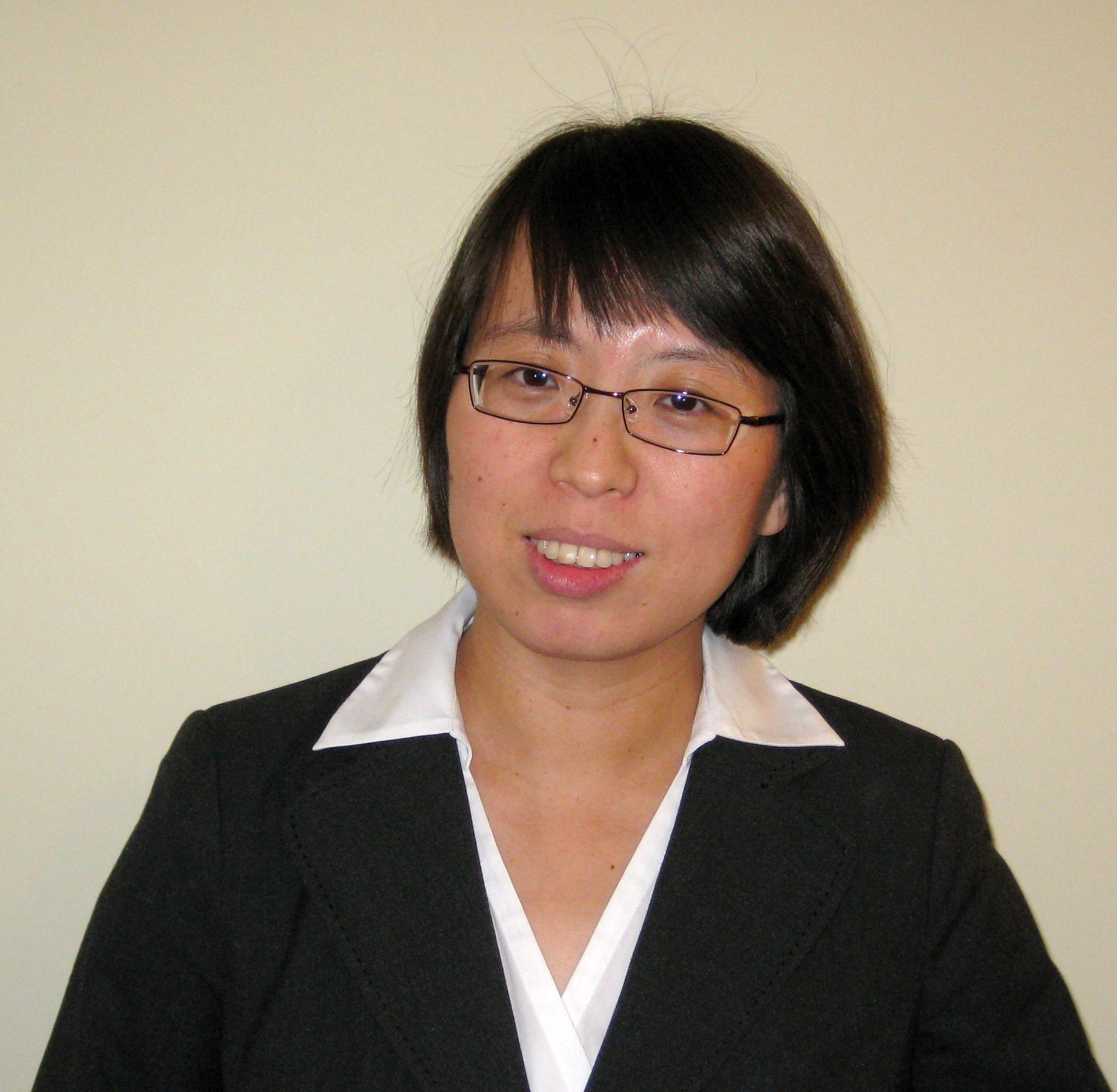
Jun-Hong Cui received her B.S. degree in Computer Science from Jilin University, China in 1995, her M.S. degree in Computer Engineering from Chinese Academy of Sciences in 1998, and her Ph.D. degree in Computer Science from UCLA in 2003. Currently, she is an Associate Professor in the Computer Science and Engineering Department at University of Connecticut (UConn). She also serves as the Assistant Dean for Graduate Studies and Diversity of School of Engineering at UConn.
Jun-Hong’s research interests cover the design, modelling, and performance evaluation of networks and distributed systems. Recently, her research mainly focuses on exploiting the spatial properties in the modeling of network topology, network mobility, and group membership, scalable and efficient communication support in overlay and peer-to-peer networks, algorithm and protocol design in underwater sensor networks and autonomous underwater vehicle (AUV) networks. At UConn, she leads UbiNet (Ubiquitous Networking) Lab and UWSN (UnderWater Sensor Network) Lab. See http://www.cse.uconn.edu/˜jcui/ for her recent projects and publications.
Jun-Hong is actively involved in the community as an organizer, a TPC member, and a reviewer for numerous conferences and journals. She was a guest editor for ACM MCCR (Mobile Computing and Communications Review) and Elsevier Ad Hoc Networks. She now serves as an Associate Editor for Elsevier Ad Hoc Networks. She co-founded the first ACM International Workshop on UnderWater Networks (WUWNet'06), and she is now serving as the WUWNet steering committee chair. Jun-Hong received 2007 NSF CAREER Award and 2008 ONR Young Investigator Award. She also received the United Technologies Corporation (UTC) Professorship in Engineering Innovation award at UConn in 2008 and UCLA Engineering Distinguished Young Alumnus Award in 2010.
Shengli Zhou (University of Connecticut, USA)
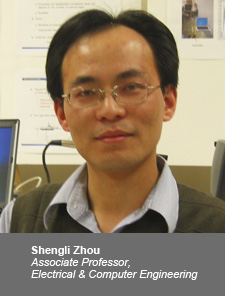
Shengli Zhou received B.S. and M.Sc. degrees in electrical engineering and information science from the University of Science and Technology of China, Hefei, in 1995 and 1998, respectively, and a Ph.D. degree in electrical engineering from the University of Minnesota, Minneapolis, in 2002. He has been an assistant professor with the Department of Electrical and Computer Engineering at the University of Connecticut (UCONN), Storrs, 2003-2009, and now is an associate professor. He holds a United Technologies Corporation (UTC) Professorship in Engineering Innovation, 2008-2011.
His research interests lie in the areas of communications and signal processing, including channel estimation and equalization, multi-user and multicarrier communications, space-time coding, adaptive modulation, and cross-layer designs. His recent interest is focused on underwater acoustic communications and networking.
He has been an Associate Editor for IEEE Transactions on Wireless Communications from 2005 - 2007, an associate editor for IEEE Transactions on Signal Processing, 2008-2010, and is now an associate editor for IEEE Journal of Oceanic Engineering. Dr. Zhou received 2007 ONR Young Investigator Program (YIP) Award for the project ``The Next Milestone: A Multicarrier Acoustic MODEM with Channel and Network-Adaptivity for Underwater Autonomous Distributed Systems''. He received the 2007 Presidential Early Career Award for Scientists and Engineers (PECASE).
go to the top
T2. Coherent versus Non-Coherent Coded Cooperative Wireless Systems
Abstract:
An attractive technique of providing multiple independently faded replicas of the transmitted signal for the sake of achieving a beneficial diversity gain is to employ relaying, distributed space-time coding or some other cooperation-aided procedure, which is the subject of this overview. We may also interpret the benefits of decode-and-forward based relaying as receiving and then flawlessly regenerating and re-transmitting the original transmitted signal from a relay closer to the destination - provided of course that the relay succeeded in error-freely detecting the original transmitted signal.
This tutorial reviews the current state-of-the-art in cooperative communications and proposes a number of novel relaying and cooperation techniques. An important related issue is the availability or the absence of accurate channel information, which leads to the concept of coherent versus non-coherent detection both at the relays and at the destination.
Naturally, when using hard-decisions in the transmission chain, we discard valuable soft-information, which results in an eroded performance, albeit also reduces the complexity imposed. Hence the hard- versus soft-decoding performance trade-offs will also be explored in the course, along with the benefits of interleaved random space-time coding invoked for multi-source cooperation.
Lajos Hanzo (University of Southampton, United Kingdom)

Lajos Hanzo received his first-class Master degree in electronics in 1976, his PhD in 1983 and his Doctor of Sciences (DSc) degree in 2004. He is a Fellow of the Royal Academy of Engineering (FREng). He co-authored 20 IEEE Press - John Wiley books totalling in excess of 10 000 pages on mobile radio communications, published 1200+ research entries at IEEE Xplore, organized and chaired major IEEE conferences, and has been awarded a number of distinctions. Lajos is also an IEEE Distinguished Lecturer and a Fellow of both the IET and IEEE. He is the Editor-in-Chief of the IEEE Press. He has in excess of 12,000 Scholar Index citations. For further information on research in progress and associated publications please refer to http://www-mobile.ecs.soton.ac.uk;
go to the top
T3. Cross-Layer Optimization for Spectral and Energy Efficiency
Abstract:
The future success of communication networks hinges on the ability to overcome the mismatch between requested quality of service (QoS) and limited network resources. Spectrum is a natural resource that cannot be replenished and therefore must be used efficiently. On the other hand, energy efficiency (EE) is also becoming increasingly important as battery technology has not kept up with the growing requirements stemming from ubiquitous multimedia applications. This tutorial introduces cross-layer technologies to improve both spectral and energy efficiency from different perspectives of wireless systems. We will first discuss the basic wireless channel characteristics and the methodologies needed to enable high-performance wireless networks. Then we introduce state-of-art spectral and energy efficient communication technologies for both individual users and multi-user networks. The tutorial will be concluded by the discussion of the tradeoff between spectral and energy efficiency in interference limited networks.
Ye (Geoffrey) Li (Georgia Institute of Technology, USA)
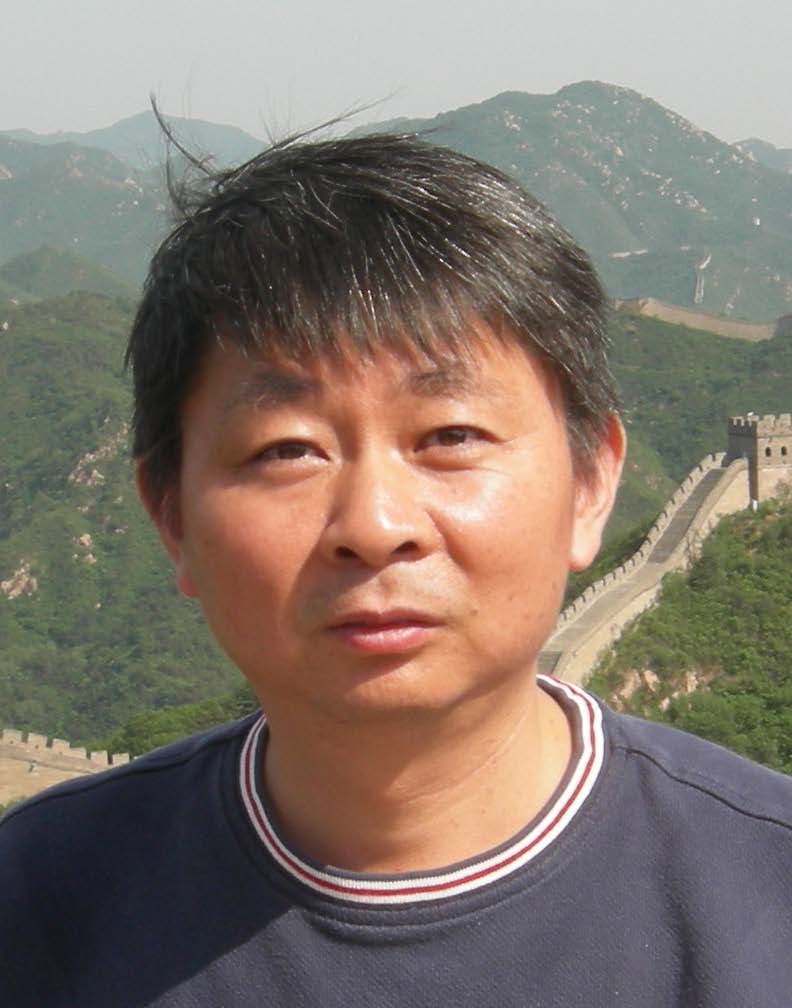
Ye (Geoffrey) Li (S'93-M'95-SM'97- F’05) received his B.S.E. and M.S.E. degrees in 1983 and 1986, respectively, from the Department of Wireless Engineering, Nanjing Institute of Technology, Nanjing, China, and his Ph.D. degree in 1994 from the Department of Electrical Engineering, Auburn University, Alabama.
He was a Teaching Assistant and then a Lecturer with Southeast University, Nanjing, China, from 1986 to 1991, a Research and Teaching Assistant with Auburn University, Alabama, from 1991 to 1994, and a Post-Doctoral Research Associate with the University of Maryland at College Park, Maryland, from 1994 to 1996. He was with AT&T Labs - Research at Red Bank, New Jersey, as a Senior and then a Principal Technical Staff Member from 1996 to 2000. Since 2000, he has been with the School of Electrical and Computer Engineering at Georgia Institute of Technology as an Associate and then a Full Professor. He is also holding the Cheung Kong Scholar title at the University of Electronic Science and Technology of China since March 2006.
His general research interests include statistical signal processing and telecommunications, with emphasis on OFDM and MIMO techniques, cross-layer optimization, and signal processing issues in cognitive radios. In these areas, he has published about 200 papers in refereed journals or conferences and two books, 20 of which are with over 100 Google citations. He has over 20 patents granted or filed. He once served or is currently serving as an editor, a member of editorial board, and a guest editor for over 10 technical journals. He organized and chaired many international conferences, including technical program vice-chair of IEEE ICC’03 and co-chair of IEEE SPARC’11. He has been awarded an IEEE Fellow for his contributions to signal processing for wireless communications since 2006, selected as a Distinguished Lecturer for 2009 - 2010 by IEEE Communications Society, and won 2010 IEEE Communications Society Stephen O. Rice Prize Paper Award in the field of communications theory.
Guowang Miao (Samsung, USA)
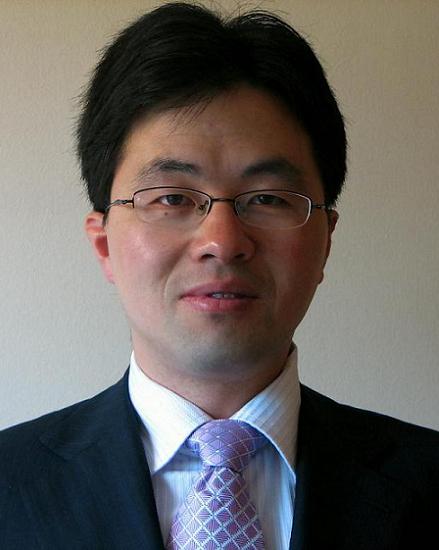
Guowang Miao (S’ 05 - M’ 10) received a B.S. and a M.S. degree, in 2003 and 2006, in electronic engineering from Tsinghua University, Beijing, China, and a M.S. degree and a Ph.D. degree, both in 2009, in electrical and computer engineering from Georgia Institute of Technology, Atlanta, GA, USA. Currently he is working at Dallas Telecom Lab of Samsung on 5G wireless communications technologies and 4G Long Term Evolution – Advanced (LTE-A) standardization. His research interests are in the general areas of wireless communications and networking, with a current focus on energy efficient wireless communications, optimization of distributed random access, heterogeneous networks, scheduling, coordinated multi-point transmission/reception, and PHY-MAC cross-layer design for wireless networks.
go to the top
T4. Advances in Coordinated Multi-Cell Multi-User MIMO Systems
Abstract:
In this tutorial, we first discuss multiuser MIMO (MU-MIMO) antenna techniques in a point-to-point single-cellular environment. We explain how multi-user scheduling techniques can exploit the degree of freedom in the user domain to enhance the coverage and capacity of MIMO systems simultaneously. Next, we extend our scope to the point-to-multipoint MU-MIMO broadcast systems with an emphasis on discussing the limited feedback issue and beamforming design techniques for MU-MIMO broadcast systems. Then, we will explain how the MU-MIMO broadcast techniques can be applied to improve performance of the multi-cellular MIMO systems in an interference-limited environment. Last, we will introduce the state of art coordinated multi-point transmission (CoMP) techniques in 3GPP LTE-advanced or called the collaborative MIMO (Co-MIMO) techniques in IEEE 802.16m WiMAX, and conclude this tutorial by discussing the open issues in this field.
Li-Chun Wang (National Chiao Tung University, Taiwan)
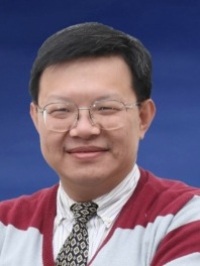
Li-Chun Wang (M’96 – SM’06 – F’11) received the B.S. degree from National Chiao Tung University, Taiwan, R. O. C. in 1986, the M.S. degree from National Taiwan University in 1988, and the Ms. Sci. and Ph. D. degrees from the Georgia Institute of Technology , Atlanta, in 1995, and 1996, respectively, all in electrical engineering.
From 1990 to 1992, he was with the Telecommunications Laboratories of the Ministry of Transportations and Communications in Taiwan (currently the Telecom Labs of Chunghwa Telecom Co.). In 1995, he was affiliated with Bell Northern Research of Northern Telecom, Inc., Richardson, TX. From 1996 to 2000, he was with AT&T Laboratories, where he was a Senior Technical Staff Member in the Wireless Communications Research Department. In August 2000, he has joined the Department of Electrical Engineering of National Chiao Tung University in Taiwan and has been promoted to the full professor since 2005. His current research interests are in the areas of radio resource management and cross- layer optimization techniques for wireless systems, heterogeneous wireless network design, and cloud computing for mobile applications.
He was elected to the IEEE Fellow grade in 2011 for his contributions in cellular architectures and radio resource management in wireless net- works. Dr. Wang was a co-recipient (with Gordon L. Stuber and Chin-Tau Lea) of the 1997 IEEE Jack Neubauer Best Paper Award for his paper “Architecture Design Frequency Planning, and Performance Analysis for a Microcell/Macrocell Overlaying System,” IEEE Transactions on Vehicular Technology, vol. 46, no. 4, pp. 836-848, 1997. He has published over 180 journal and international conference papers. He served as an Associate Editor for the IEEE Trans. on Wireless Communications from 2001 to 2005, the Guest Editor of Special Issue on “Mobile Computing and Networking” for IEEE Journal on Selected Areas in Communications in 2005 and on ”Radio Resource Management and Protocol Engineering in Future IEEE Broadband Networks” for IEEE Wireless Communications Magazine in 2006. He is holding nine US patents.
go to the top
T5. Disruption/Delay Tolerant Mobile Tactical Ad Hoc Networks
Abstract:
In mobile ad hoc networks, nodes are constantly in motion and/or operate on limited power. When nodes are in motion, links can be obstructed by intervening objects. When nodes must conserve power, links are shut down periodically. These result in intermittent connectivity. When no path exists between source and destination, network partition occurs. Applications in intermittent connected networks must tolerate delays beyond conventional IP forwarding delays and these networks are referred to as delay/disruption tolerant networks (DTN). New protocols specifically for DTNs must be developed as existing protocols designed for the Internet do not work properly. Recently there has been much research activity in the emerging area of the delay/disruption tolerant networks (e.g., DARPA launched one DTN program in 2005). There are different types of DTNs proposed in the literature, depending on the nature of the network environment.
In this tutorial, we will review different DTN architectures and different protocol stacks proposed, the Bundle Protocol (BP), the Convergence Layer (CL) protocols such as Licklider transmission protocol (LTP)-CL, TCP-CL and UDP-CL. Routing in DTNs is one of the key components in the DTN architecture. Therefore, researchers have proposed different routing protocols for different types of DTNs in the last few years. In this tutorial, we will review the state of the art in routing in DTNs and categorize these routing protocols based on information used. Recent developments in erasure coding and network coding applied to DTNs are also discussed. An overview of recent research and experimental activities on DTN over simulation testbed and in space, both low-Earth orbit and deep space, is also presented. The tutorial also identifies open research issues and intends to motivate new research and development in this area. By finishing this tutorial, the attendee should be able to describe what a DTN is, what the applications in DTN are, what the main research challenges in DTNs are, what kind of routing protocols have already been proposed and what the open research issues in DTNs are.
Zhensheng Zhang (Argon ST/Boeing, USA)
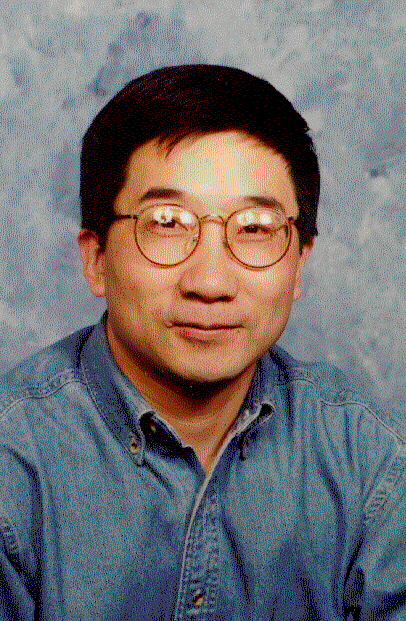
Dr. Zhensheng Zhang received his Ph.D. in electrical engineering from the University of California, Los Angeles in 1989. Dr. Zhang has over twenty years experience in design and analysis of network architecture, protocols and control algorithms, with very strong backgrounds in performance analysis, modeling and simulation of the communication networks. He is currently with Argon ST/Boeing (formerly SDRC), Principal Engineer, Networking Research, serving as Principal Investigator for several DOD projects. Before joining SDRC, he visited Microsoft Research in the summer of 2002 and worked at Sorrento Networks, Department of System Architecture, for 2 years, responsible for designing the next-generation optical metro networks using the GMPLS control framework. Prior to Sorrento Networks he was with Bell Laboratories, Lucent Technologies, focusing on research and development in wireless networks. Dr. Zhang severed as Editor of IEEE Transaction on Wireless Communications from 2002 to 2006, as the General Chair of Broadband Wireless Networking Symposium, October 2004. He also served as Guest Editor for the IEEE JSAC special issue on Overlay Networks, 2003 and the Journal of Wireless Networks issue on multimedia wireless networks, August 1996. His research interests include wireless ad hoc networks, wireless sensor networks. He has given many invited talks and tutorials on wireless ad hoc networks at various conferences. Dr. Zhang will serve as the IEEE Globecom2012 TPC Chair.
go to the top
T6. Next Generation Data Center Networks for Cloud Computing
Abstract:
Large scale data centers are enabling the new era of Internet cloud computing. The computing platform in such data centers consists of low-cost commodity servers that, in large numbers and with software support, match the performance and reliability of expensive enterprise-class servers of yesterday, at a fraction of the cost. The network interconnect within the data center, however, has not seen the same scale of commoditization or dropping price points. Today’s data centers use expensive enterprise-class networking equipment and associated best-practices that were not designed for the requirements of Internet-scale data center services -- they severely limit server-to-server network capacity, create fragmented pools of servers that do not allow any service to run on any server, and have poor reliability and utilization. The commoditization and redesign of data center networks to meet cloud computing requirements is the next frontier of innovation in the data center.
Recent research in data center networks addresses many of these aspects involving both scale and commoditization. By creating large flat Layer 2 networks, data centers can provide the view of a flat unfragmented pool of servers to hosted services. By using traffic engineering methods (based on both oblivious and adaptive routing techniques) on specialized network topologies, the data center network can handle arbitrary and rapidly changing communication patterns between servers. By making data centers modular for incremental growth, the up-front investment in infrastructure can be reduced, thus increasing their economic feasibility. This is an exciting time to work in the data center networking area, as the industry is on the cusp of big changes, driven by the need to run Internet-scale services, enabled by the availability of low-cost commodity switches/routers, and fostered by creative and novel architectural innovations.
In this tutorial, we will begin with an introduction to data centers for Internet/cloud services. We will survey several next-generation data center network designs that meet the criteria of allowing any service to run on any server in a flat un-fragmented pool of servers and providing bandwidth guarantees for arbitrary communication patterns among servers (limited only by server line card rates). These span efforts from academia and industry research labs, including VL2, Portland, SEATTLE, Hedera, and BCube, and ongoing standardization activities like IEEE Data Center Ethernet (DCE) and IEEE TRILL. We will also cover other emerging aspects of data center networking like energy proportionality for greener data center networks.
Sudipta Sengupta (Microsoft Research, Redmond, WA, USA)
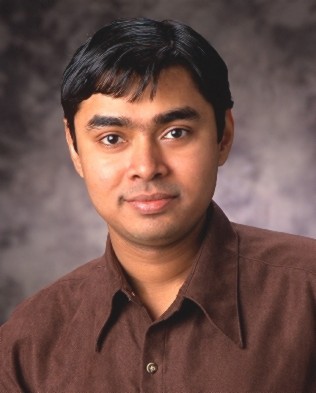
Sudipta Sengupta is currently at Microsoft Research, where he is working on data center systems and networking, peer-to-peer applications, wireless networking, flash memory for cloud/server applications, and data deduplication. Previously, he spent five years at Bell Laboratories, the R&D Division of Lucent Technologies, where he worked on Internet routing, optical switching, network security, wireless networks, and network coding. Before that, he was with Tellium, an optical networking pioneer, that grew from an early-stage startup to a public company during his tenure there. Before that, he was part of a foundational team at Oracle, working on the company’s first mobile applications product offering.
Dr. Sengupta received a Ph.D. and an M.S. in EECS from Massachusetts Institute of Technology (MIT), USA, and a B.Tech. in Computer Science from Indian Institute of Technology (IIT), Kanpur, India. He was awarded the President of India Gold Medal at IIT-Kanpur for graduating at the top of his class. Dr. Sengupta has published 65+ research papers in some of the top conferences, journals, and technical magazines. He has authored 40+ patents (granted or pending) in the area of computer systems and networking. Dr. Sengupta has taught advanced courses/tutorials at many academic/research and industry conferences. His recent work on networking and storage has received widespread coverage in media/press and blogs.
Dr. Sengupta won the IEEE Communications Society William R. Bennett Prize for his work on a new oblivious routing scheme for handling highly variable Internet traffic and the IEEE Communications Society Leonard G. Abraham Prize for his adaptation of the scheme in IP-over-Optical networks. At Bell Labs, he received the President's Teamwork Achievement Award for technology transfer of research into Lucent products. His work on peer-to-peer based distribution of real-time layered video received the IEEE ICME 2009 Best Paper Award. At Microsoft, he received the Gold Star Award which recognizes excellence in leadership and contributions for Microsoft's long term success. Dr. Sengupta is a Senior Member of IEEE.
go to the top
T7. Information Warfare
Abstract:
The tutorial gives a technical overview of information warfare (or cyber warfare) to attendees familiar with networks. Information warfare is computer network attacks between nations for political or military reasons. The introduction covers the goals, actors, and targets of information warfare. A historical background is highlighted by example cases. The main part of the tutorial covers offensive and defensive techniques. Offensive techniques include espionage to reconnoiter networks; intrusions to compromise networks; stealth to evade detection; maintenance of persistent control; and service disruption by denial of service. Defense techniques include deterrence and prevention; detection and attribution; mitigation; and recovery. Finally, a comprehensive survey of open research issues points out several technical areas that need more work to find better solutions.
Thomas M. Chen (Swansea University, Wales, United Kingdom)
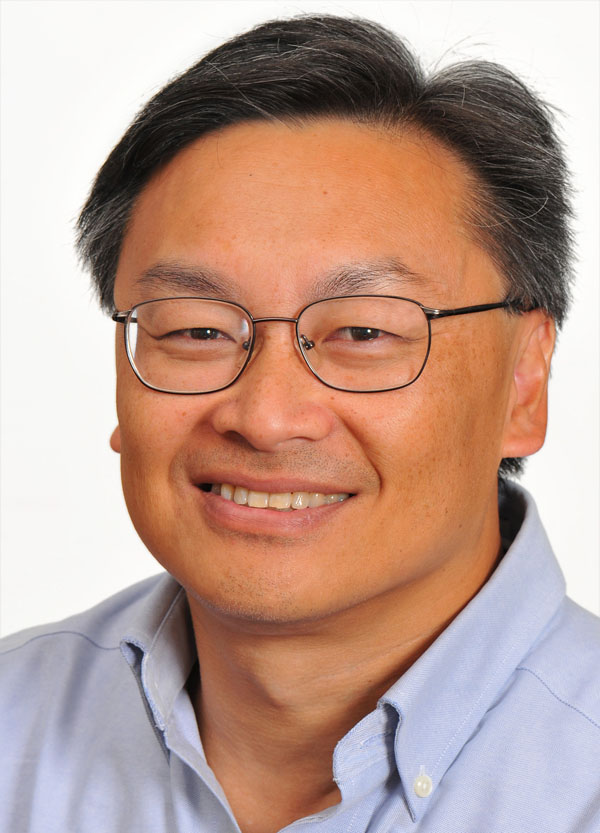
Thomas M. Chen is a professor in networks in the College of Engineering at Swansea University, Wales, U.K. He joined Swansea in mid-2008 from Southern Methodist University in Dallas, Texas, where he was an associate professor in the Department of Electrical Engineering. Prior to SMU, he worked on high-speed networking research at Verizon Laboratories (formerly GTE) in Waltham, Massachusetts. He received the BS and MS degrees in electrical engineering from M.I.T., and the PhD in electrical engineering from University of California, Berkeley. He currently serves as editor-in-chief for IEEE Network, senior technical editor for IEEE Communications Magazine, editor for J. of Security and Communication Networks, and editor for International J. on Security and Networks. He was formerly editor-in-chief of IEEE Communications Magazine and founding editor of IEEE Communications Surveys. He received the IEEE Communications Society’s Fred Ellersick best paper award in 1996.
go to the top
T8. Interference Alignment: A new look at Signal Dimensions in Interference Networks
Abstract:
The Shannon capacity of wireless networks is the holy grail of network information theory. Recently, this area has seen a burst of activity leading to remarkable progress on a variety of problems including the capacity of interference networks, X networks, cellular networks, multicast and compound broadcast networks, tactical communication networks with secrecy and jamming issues, cooperative communication networks, cognitive radio networks, and network coding for multiple unicast networks and distributed data storage networks. While each communication scenario has its own peculiarities, a common thread running through a vast number these recent developments is the new idea of interference alignment. This tutorial is intended as a survey of these recent advances, following the connecting thread of interference alignment and highlighting the new insights and intuition that emerge out of the recent results. The tutorial will place special emphasis on the signal processing aspects of Interference Alignment. Topics covered will include – the non-trivial nature of bandwidth and degrees of freedom metrics in a multiuser setting; the tradeoffs between accessible signaling dimensions – time, frequency, space and signal levels in a wireless network with multiple antenna nodes; interference alignment as a means to recover desired information when the number of equations is much smaller than the number of unknown variables; conceptual examples to illustrate the principles behind interference alignment; feasibility conditions for interference alignment through linear beamforming schemes and connections to algebraic geometry; lattice alignment and connections to diophantine approximation theory; asymptotic interference alignment; opportunistic and ergodic interference alignment; distributed interference alignment; blind interference alignment; retrospective interference alignment; and the combination of interference alignment and network coding for applications like multiple unicasts and distributed data storage repair.
Syed A. Jafar (University of California, Irvine, CA, USA)
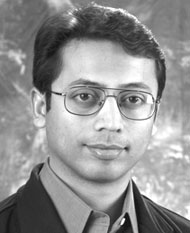
Syed Ali Jafar received the B. Tech. degree in Electrical Engineering from the Indian Institute of Technology (IIT), Delhi, India in 1997, the M.S. degree in Electrical Engineering from California Institute of Technology (Caltech) , Pasadena USA in 1999, and the Ph.D. degree in Electrical Engineering from Stanford University, Stanford, CA USA in 2003. His industry experience includes positions at Lucent Bell Labs, Qualcomm Inc. and Hughes Software Systems. He is currently an Associate Professor in the Department of Electrical Engineering and Computer Science at the University of California Irvine, Irvine, CA USA. His research interests include multiuser information theory and wireless communications.
Dr. Jafar received the NSF CAREER award in 2006, the ONR Young Investigator Award in 2008, the IEEE Information Theory Society paper award in 2009 and the Engineering School Fariborz Maseeh Outstanding Research Award in 2010. He received the UC Irvine Engineering Faculty of the Year award in 2006 and the UC Irvine EECS Professor of the Year Award twice, in 2009 and 2011, for excellence in teaching. Dr. Jafar was the inaugural instructor for the First Canadian School of Information Theory in 2011, a plenary speaker for the IEEE Communication Theory Workshop 2010 and SPCOM 2010, and a Visiting Erskine Fellow to the University of Canterbury New Zealand. He served as Associate Editor for IEEE Transactions on Communications 2004-2009, for IEEE Communications Letters 2008-2009 and is currently serving as Associate Editor for IEEE Transactions on Information Theory.
go to the top
T9. Communications and Networking for Smart Grid Systems
Abstract:
In this tutorial, an intensive (but friendly) introduction to the various data communications and networking technologies being developed for smart grid will be provided. First, a brief overview of smart grid, enabling technologies for smart grid, and the importance and requirements of data communication for reliable and efficient operation of smart grid will be presented. The details of data communication and networking infrastructure (e.g., home area network, wide-area measurement system, home energy management system, advanced metering infrastructure, demand response management, and sensor and actuator network), and the related standardization activities will then be discussed. The impact of cyber threat and security related issues (e.g., security requirements and security services including confidentiality, integrity, authentication, authorization, and third-party protection) will be reviewed. To this end, several major open research issues and directions for future research on smart grid communications and networking will be outlined.
Dusit Niyato (Nanyang Technological University, Singapore)
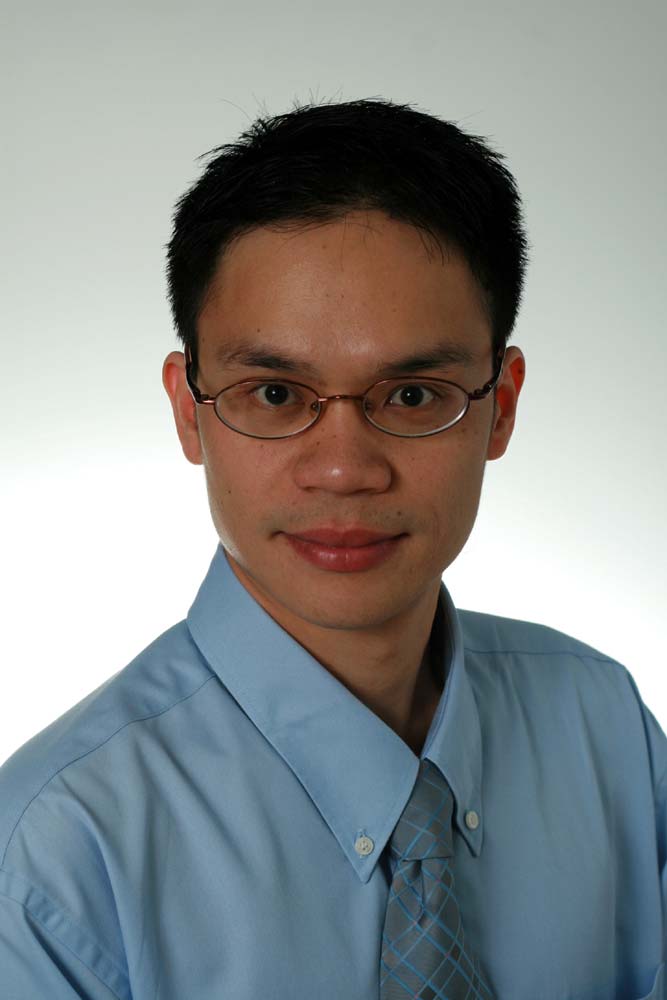
Dusit Niyato is currently an Assistant Professor in the Division of Computer Communications, School of Computer Engineering, Nanyang Technological University, Singapore. His current research interests include design, analysis, and optimization of wireless communication and vehicular networks for ITS applications, smart grid systems, and green radio communications. He is co-author of the books Dynamic Spectrum Access and Management in Cognitive Radio Networks (Cambridge University Press, 2009) and Game Theory in Wireless and Communication Networks: Theory, Models, and Applications (Cambridge University Press, 2009, ISBN: 978-0-521-89847-8). He has published more than 80 papers in leading Journal and Conferences related to protocol design and radio resource management in mobile communication systems. Dr. Niyato serves as an Editor for the IEEE Transactions on Wireless Communications, Wireless Communications and Mobile Computing (WCMC) Journal, and Journal of Communications and Networks (JCN). He served as a co-chair for the Next Generation Mobile Networks Symposium held in conjunction with International Wireless Communications and Mobile Computing Conference (IWCMC) in 2009 and 2010.
Rose Qingyang Hu (Utah State University, USA)

Rose Qingyang Hu received her BS degree from the University of Science and Technology of China, her MS degree from Polytechnic University, Brooklyn, NY, and her Ph.D. degree from the University of Kansas. During 1998-2000, she worked for Nortel Networks, where she has been leading Nortel broadband multimedia satellite performance evaluation and 1xRTT CDMA Wireless Priority Service system design and evaluation. During 2000-2001, she worked for Yotta Networks as a senior systems engineer, leading the system design and performance evaluation for optical switch scheduling, reliability and QoS. From January 2002 to June 2004, she had been with Electrical and Computer Engineering Department of Mississippi State University as an Assistant Professor. She had advised graduate students on their research and taught advanced level courses on wireless networks and performance analysis during that period. From 2006 to 2009 she was a technical manager with Nortel wireless standards and architecture team, leading Nortel 4G wireless technology performance evaluation and standards development. Between April 2009 and December 2010, she had been a Senior Researcher at RIM, and a Senior Wireless Platform Architect for Intel before she joined the faculty of Utah State University recently. Currently she is an Associate Professor in the Department of Electrical and Computer Engineering at Utah State University.
Dr. Hu is serving on the editorial board for Security and Communication Networks Journal. She is a guest editor for IEEE Communications Magazine special issue on Recent Progress in Machine to Machine Communications, a guest editor for IEEE Wireless Communications Magazine special issue on HetNets, and a guest editor for IEEE Network Magazine special issue on Communication Infrastructures for Smart Grid. Her current research interests include in next generation wireless communications and networks, smart grid communications, network modeling and performance analysis, and network security. She has been published extensively in all the above research areas. Dr. Hu is a Senior Member of IEEE and a member of Phi Kappa Phi and Epsilon Pi Epsilon Honor Societies.
Ekram Hossain (University of Manitoba, Canada)
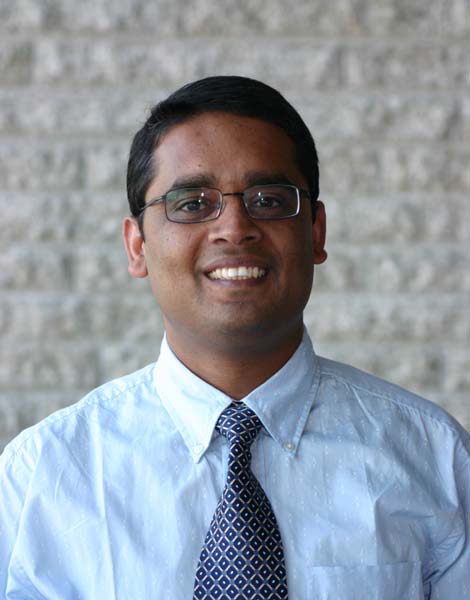
Ekram Hossain is currently a Full Professor in the Department of Electrical and Computer Engineering at University of Manitoba, Winnipeg, Canada (http://www.ee.umanitoba.ca/~ekram). His current research interests include resource allocation and medium access control in wireless networks, cooperative and cognitive wireless systems, smart grid systems, and green radio communications. He is an author/editor of the books Smart Grid Communications and Networking (Cambridge University Press, 2012), Cooperative Cellular Wireless Networks (Cambridge University Press, 2011, ISBN: 978-0-521-76712-5), Dynamic Spectrum Access and Management in Cognitive Radio Networks (Cambridge University Press, 2009, ISBN: 978-0-521-89847-8), Cognitive Wireless Communication Networks (Springer, 2007, ISBN: 978-0-387-68830-5), Wireless Mesh Networks: Architectures and Protocols (Springer, 2007, ISBN: 978-0-387-68839-8), Introduction to Network Simulator NS2 (Springer, 2008, ISBN: 978-0-387-71759-3), Heterogeneous Wireless Access networks (Springer, 2008, ISBN: 978-0-387-09776-3). Dr. Hossain serves as an Area Editor for the IEEE Transactions on Wireless Communications, an Editor for the IEEE Transactions on Mobile Computing, the IEEE Communications Surveys and Tutorials, and IEEE Wireless Communications. Dr. Hossain is a registered Professional Engineer (P.Eng.) in the province of Manitoba, Canada.
Yi Qian (University of Nebraska–Lincoln, USA)
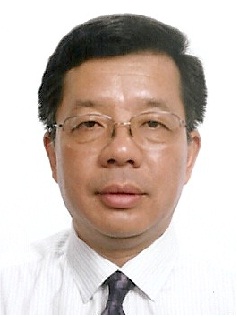
Yi Qian received a Ph.D. degree in electrical engineering from Clemson University. Currently he is an assistant professor in the Department of Computer and Electronics Engineering, University of Nebraska- Lincoln, located at the Peter Kiewit Institute in Omaha, Nebraska. His research interests include information assurance and network security, network management, network design, network modeling, simulation and performance analysis for next generation wireless networks, wireless sensor networks, broadband satellite networks, optical networks, high-speed networks and the Internet. His previous professional experience included serving as a senior member of scientific staff and a technical advisor at Nortel Networks, an assistant professor at University of Puerto Rico at Mayaguez, and a senior research member at the National Institute of Standards and Technology - a major US federal government agency. He has a successful track record to lead research teams and to publish research results in leading scientific journals and conferences. Several of his recent journal articles on wireless network design and wireless network security are among the most accessed papers in the IEEE Digital Library.
He has been on numerous conference technical committees including serving as the Symposium Co-Chair of IEEE GLOBECOM 2011 - Symposium on Communications and Information Security, the Tutorial Co-Chair and the Workshop Co-Chair of International Teletraffic Congress 2011, the Symposium Co-Chair of IEEE SmartGridComm 2010 - Symposium on Regulatory Issues and Their Impact on Communications Aspects, the Symposium Co-Chairs of IEEE ICC 2010 and 2009 - Symposium on Wireless Communications, the Tutorial Chair of DRCN 2009, the Panel Chair of IWSSC 2009, the Track Chair of IEEE VTC 2008-Spring - Mobile/Wireless Applications and Services Track, the Track Chair of MILCOM 2007 - Wireless and Sensor Networks Track, the General Chair of ISWPC 2007, the Finance Chair of ISWPC 2007, the Technical Program Co-Chairs of Workshop on Information Assurance 2007 and 2006, and the Symposium Co-Chair of IEEE GLOBECOM 2006 - Symposium on Wireless Communications and Networking. He is an associate editor for IEEE Transactions on Circuits and Systems for Video Technology. He is also serving on the editorial boards for Security and Communication Networks, Wireless Communications and Mobile Computing, and International Journal of Communication Systems. He has been served as a guest editor for several special issues for IEEE Communications Magazines, IEEE Wireless Communications Magazine, and IEEE Network Magazine, including recently, as a guest editor for IEEE Network Magazine special issue on Communication Infrastructures for Smart Grid. Dr. Yi Qian is a member of ACM and a senior member of IEEE.
go to the top
T10.Biologically-inspired and Nano-scale Communication and Networking
Abstract:
The developments in communication technologies have yielded many existing and envisioned information network architectures such as cognitive radio networks, sensor and actor networks, quantum communication networks, terrestrial next generation Internet, and InterPlaNetary Internet. However, there exist many common significant challenges to be addressed for the practical realization of these current and envisioned networking paradigms such as the increased complexity with large scale networks, their dynamic nature, resource constraints, heterogeneous architectures, absence or impracticality of centralized control and infrastructure, need for survivability, and unattended resolution of potential failures. These challenges have been successfully dealt with by Nature, which, as a result of millions of years of evolution, have yielded many biological systems and processes with intrinsic appealing characteristics such as adaptivity to varying environmental conditions, inherent resiliency to failures and damages, successful and collaborative operation on the basis of a limited set of rules and with global intelligence which is larger than superposition of individuals, self-organization, survivability, and evolvability. Inspired by these characteristics, many researchers are currently engaged in developing innovative design paradigms to address the networking challenges of existing and envisioned information systems. In this tutorial, the current state-of-the-art in bio-inspired networking is captured. The existing bio-inspired networking and communication protocols and algorithms devised by looking at biology as a source of inspiration, and by mimicking the laws and dynamics governing these systems is presented along with open research issues for the bio-inspired networking. Furthermore, the domain of bio-inspired networking is linked to the forthcoming research domain of nanonetworks, which bring a set of unique challenges. The objective of this tutorial is to provide better understanding of the potentials for bio-inspired and nano-scale networking, and to motivate research community to further explore this timely and exciting field.
Ozgur B. Akan (Koc University, Turkey)

Ozgur B. Akan received the BS and MS degrees in electrical and electronics engineering from Bilkent University and Middle East Technical University, Ankara, Turkey, in June 1999 and January 2002, respectively. He received the PhD degree in electrical and computer engineering from the Broadband and Wireless Networking Laboratory, School of Electrical and Computer Engineering, Georgia Institute of Technology, Atlanta, in May 2004. He is currently Associate Professor with the Department of Electrical and Electronics Engineering, Koc University and the Director of Next-generation and Wireless Communications Laboratory (NWCL). His current research interests are in nanoscale and molecular communications, next-generation wireless networks, biologically-inspired communications, information theory.
Dr. Akan is an Associate Editor for IEEE Transactions on Vehicular Technology, International Journal of Communication Systems (Wiley), Nano Communication Networks Journal (Elsevier), European Transactions on Telecommunications. He served as an Editor for ACM/Springer Wireless Networks (WINET) Journal (2004-2010), as an Area Editor for AD HOC Networks Journal (Elsevier) (2004-2008), as a Guest Editor for several special issues, as the TPC Co-Chair for the IEEE ISCC 2012, ACM MSWiM 2010, the General Co-Chair for The Third International Conference on Bio-Inspired Models of Network, Information, and Computing Systems (ICST/IEEE BIONETICS 2008), the European Vice Chair for The Second International Conference on Nano- Networks (ICST/ACM Nano-Net 2007), an International Vice Chair for IEEE INFOCOM 2006, and in organizing committees and technical program committees of many other international conferences.
He is an IEEE Communications Society Distinguished Lecturer (2011-2012), IEEE Senior Member (Communications Society, Information Theory Society, Vehicular Technology Society), and a member of ACM. He is the Vice President for IEEE Communications Society - Turkey Section. Dr. Akan received the IEEE Communications Society Outstanding Young Researcher Award 2010 for EMEA Region (as runner-up), the IBM Faculty Award twice in 2010 and 2008, Turkish Academy of Sciences Distinguished Young Scientist Award 2008 (TUBA-GEBIP), the 2006 Parlar Foundation Research Encouragement Award for his research in bio-inspired communication techniques for wireless communication networks, the 2006 Editor of the Year Award from AD HOC Networks (Elsevier) Journal, the Best Paper Award in IEEE ISCN 2006, the TUBITAK-Career Award in 2005, and the 2003 Researcher of the Year Award in Broadband and Wireless Networking Laboratory, School of Electrical and Computer Engineering, Georgia Institute of Technology.
Falko Dressler (University of Innsbruck, Austria)
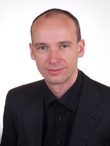
Falko Dressler is a Full Professor of Computer Science heading the Computer and Communication Systems Group at the Institute of Computer Science, University of Innsbruck. He teaches on self-organizing sensor and actor networks, network security, and communication systems. Dr. Dressler received his M.Sc. and Ph.D. degree from the Dept. of Computer Science, University of Erlangen in 1998 and 2003, respectively. In 2003, he joined the Computer Networks and Internet group at the Wilhelm-Schickard-Institute for Computer Science, University of Tuebingen. Between 2004 and 2011, he has been an Assistant Professor with the Computer Networks and Communication Systems chair at the Department of Computer Science, University of Erlangen, coordinating the Autonomic Networking group.
Dr. Dressler is an Editor for journals such as Elsevier Ad Hoc Networks, ACM/Springer Wireless Networks (WINET), and Elsevier Nano Communication Networks. He was guest editor of special issues on self-organization, autonomic networking, and bio-inspired computing and communication for IEEE Journal on Selected Areas in Communications (JSAC), Elsevier Ad Hoc Networks, and others. Dr. Dressler was general chair of IEEE/ACM BIONETICS 2007 and IEEE/IFIP WONS 2011. Besides chairing a number of workshops associated to high-level conferences, he regularly acts in the TPC of leading networking conferences such as IEEE INFOCOM, IEEE ICC, IEEE Globecom, IEEE WCNC, and IEEE MASS. Among other, Dr. Dressler wrote the textbooks Self-Organization in Sensor and Actor Networks, published by Wiley in 2007. Dr. Dressler is an IEEE Distinguished Lecturer in the fields of inter-vehicular communication, self-organization, and bio-inspired networking.
Dr. Dressler is a Senior Member of the IEEE (COMSOC, CS, VTS) as well as a Senior Member of ACM (SIGMOBILE), and member of GI (KuVS). He is actively participating in the IETF standardization. His research activities are focused on adaptive wireless networking and self-organization methods addressing issues in wireless ad hoc and sensor networks, inter-vehicular communication systems, bio-inspired networking, and adaptive network security techniques.
go to the top
T11.Towards 4G: Technical Overview of LTE and LTE-Advanced
Abstract:
The current 3rd generation (3G) cellular wireless systems are evolving into 4th generation (4G). As a pathway to 4G, 3GPP developed Long Term Evolution (LTE). In terms of air interface techniques, LTE system uses OFDMA-based multicarrier modulation, MIMO techniques, and other advanced features to greatly improve the mobile wireless services. In this tutorial, we first survey the underlying techniques of the 4G systems such as OFDMA, SC-FDMA, MIMO, fractional frequency reuse (FFR), and fast multi-carrier resource scheduling. Then, we give technical overview of LTE and LTE-Advanced in detail.
Hyung G. Myung (Qualcomm, USA)
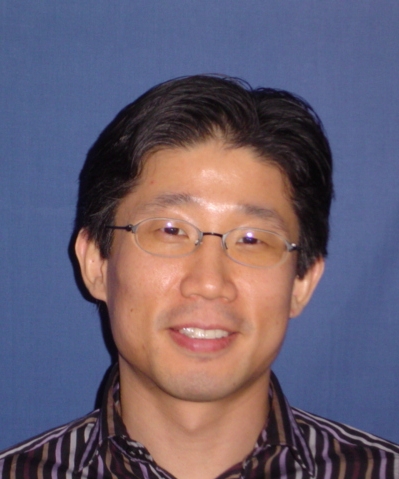
Dr. Hyung G. Myung is currently with Qualcomm, San Diego, USA. He received the B.S. and M.S. degrees in electronics engineering from Seoul National University, South Korea in 1994 and in 1996, respectively, and the M.S. degree in applied mathematics from Santa Clara University, California in 2002. He received his Ph.D. degree from the Electrical and Computer Engineering Department of Polytechnic University, Brooklyn, NY in January of 2007. From 1996 to 1999, he served in the Republic of Korea Air Force as a lieutenant officer, and from 1997 to 1999, he was with Department of Electronics Engineering at Republic of Korea Air Force Academy as a faculty member. His other industry experience includes research and development positions at ArrayComm, Samsung Advanced Institute of Technology, and InterDigital Communications. His research interests include DSP for communications and wireless communications, and he is the author of the books Single Carrier FDMA: A New Air Interface for Long Term Evolution (2008) and 3GPP Long Term Evolution: A Technical Overview (2011; to be published), both from John Wiley & Sons.
go to the top







